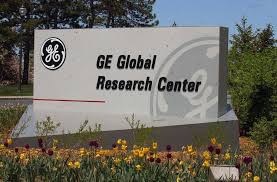Nuclear Reactors 628 - General Electric’s Global Research Center Is Working On Improved Nuclear Fuel Rod Designs And Materials
The U.S. Department of Energy (DoE) has just awarded a three hundred and three million seven hundred thousand dollar grant to General Electric’s Global Research Center (GRC) for the continued development of a new type of nuclear fuel rod. The GRC will be collaborating with three national laboratories in the project.
The grant is for a two and a half year project to develop and demonstrate new, more resilient nuclear fuel rods. These new rods will have improved performance in normal circumstances as well as accident situations. GE is bringing its expertise in materials science, 3D printing and jet engine technology to the project. The GRC has been working with a GE-led joint venture named Global Nuclear Fuels (GNF) as well as the Los Alamos, Oak Ridge and Idaho National Laboratories. They are also partnering with Southern Nuclear and Exelon Generation.
GNF has developed a new design for fuel rods called IronClad. This work was part of the DoE’s Accident Tolerant Fuel Program which was launched in 2012. This program was dedicated to the creation of new cladding materials and fuel materials that could better survive a loss of coolant in the core of a nuclear reactor. The new fuel rods were also being developed to improve fuel performance and economics during normal operation of the reactor. ARMOR coating for zirconium cladding was also developed with the help of the DoE program. This new addition to fuel rod cladding has greater resistance to oxidation and protects fuel rods against debris fretting which is the formation of “rust” and pitting of a metal surface in the absence of water.
Evan Dolley is the technical operations leader in metals at GE Global Research. He said, “With the DOE's support and in partnership with our National Lab and utility partners, we have an extraordinary opportunity to accelerate our ongoing fuel rod work and ultimately deliver new technologies to market that benefit our US nuclear facilities and those globally.”
Dolly said that the project team is employing the technical expertise of GE’s Aviation and Additive divisions. Ceramic matrix composites (CMCs) are high temperatures materials that are used in commercial jet engines to improve performance and efficiency. CMC are being applied to the channel boxes that enclose the fuel rods. Metal endcaps for prototype fuel rods are being 3D printed. Dolley said, “With the integration of nuclear-grade CMCs, we can exploit the higher heat properties of ceramics to build an even more resilient system. And the use of additive is designed to enable a more rapid response if spare parts are needed for other reactor components.”
Earlier this year, test assemblies of accident tolerant fuel rods using GNF materials were loaded into Southern Nuclear’s Hatch Unit 1 near Baxley, Georgia. Two different types of IronClad test rods were used. One of test rods was a standard rod without fuel inside. The other is a solid bar of IronClad material shaped like a fuel rod. There are also plans for such test rod assemblies to be loaded into Exelon Generation’s Clinton power plant near Clinton, Illinois in 2019.
